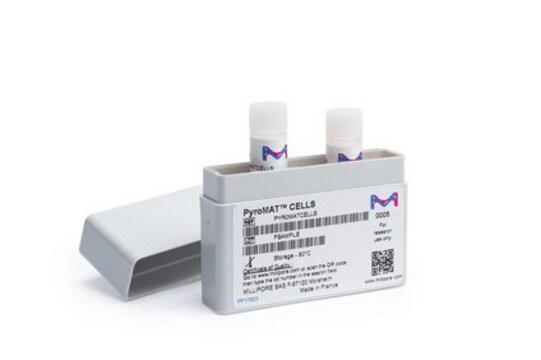MABS1252
Anti-Polycystin-1 Antibody, clone E4 (5F4D2)
clone E4 (5F4D2), from mouse
Synonim(y):
Polycystin-1, Autosomal dominant polycystic kidney disease 1 protein
About This Item
Polecane produkty
pochodzenie biologiczne
mouse
Poziom jakości
forma przeciwciała
purified immunoglobulin
rodzaj przeciwciała
primary antibodies
klon
E4 (5F4D2), monoclonal
reaktywność gatunkowa
human, mouse, rat
metody
immunocytochemistry: suitable
immunohistochemistry: suitable (paraffin)
immunoprecipitation (IP): suitable
western blot: suitable
izotyp
IgG1κ
numer dostępu NCBI
numer dostępu UniProt
Warunki transportu
wet ice
docelowa modyfikacja potranslacyjna
unmodified
informacje o genach
human ... PKD1(5310)
Opis ogólny
Specyficzność
Immunogen
Zastosowanie
Immunoprecipitation Analysis: A representative lot immunoprecipitated polycystin-1 from mouse lung tissue lysates (Courtesy of Dr. Feng Qian, University of Maryland School of Medicine, Baltimore, MD).
Western Blotting Analysis: A representative lot detected exogenously expressed polycystin-1 in lysates from HEK cells transfected with human or mouse Pkd1 cDNA, but not in lysates from mock-transfected HEK cells (Courtesy of Dr. Feng Qian, University of Maryland School of Medicine, Baltimore, MD).
Western Blotting Analysis: A representative lot detected the polycystin-1 (PC1) GPS domain cis-autocleaved N-terminal fragment (NTF) in lysates from HEK cells transfected with full-length Pkd1 cDNA, but not in lysates from mock-transfected HEK cells (Kim, H., et al. (2014). Nat. Commun. 5:5482).
Immunocytochemistry Analysis: A representative lot and an anti-Arl13b antibody co-stained the primary cilium of 4% formaldehyde-fixed, 0.1% Triton X-100-permeabilized murine embryonic fibrolasts (mMEF) and collecting duct (CD)-derived cells by dual fluorescence immunocytochemistry. No polycystin-1 immunoreactivity was detected in Pkd1-knockout mMEFs (Kim, H., et al. (2014). Nat. Commun. 5:5482).
Signaling
Developmental Signaling
Jakość
Immunohistochemistry Analysis: An 1:250 dilution of this antibody lot detected polycystin-1 immunoreactivity in human kidney tissue.
Opis wartości docelowych
Postać fizyczna
Przechowywanie i stabilność
Inne uwagi
Oświadczenie o zrzeczeniu się odpowiedzialności
Nie możesz znaleźć właściwego produktu?
Wypróbuj nasz Narzędzie selektora produktów.
Kod klasy składowania
12 - Non Combustible Liquids
Klasa zagrożenia wodnego (WGK)
WGK 1
Temperatura zapłonu (°F)
Not applicable
Temperatura zapłonu (°C)
Not applicable
Certyfikaty analizy (CoA)
Poszukaj Certyfikaty analizy (CoA), wpisując numer partii/serii produktów. Numery serii i partii można znaleźć na etykiecie produktu po słowach „seria” lub „partia”.
Masz już ten produkt?
Dokumenty związane z niedawno zakupionymi produktami zostały zamieszczone w Bibliotece dokumentów.
Nasz zespół naukowców ma doświadczenie we wszystkich obszarach badań, w tym w naukach przyrodniczych, materiałoznawstwie, syntezie chemicznej, chromatografii, analityce i wielu innych dziedzinach.
Skontaktuj się z zespołem ds. pomocy technicznej






